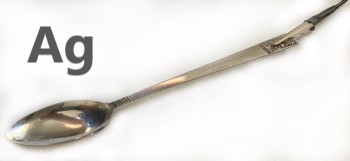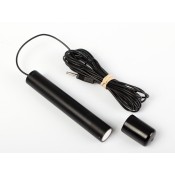HOW TO MEASURE HULL POTENTIAL
The Hull potential measure in millivolts (mV) is simply the potential difference between the boats hull and a controlled Silver/Silver Chloride reference electrode.
Each Hull material will have a different standard potential. If that material starts to corrode its potential will change. If you are using a sacrificial anode then the hull should be protected at the anodes expense.
The most dangerous times for potential corrosion is at a crowded mooring. Here leakage currents from any number of sources can cause electrolytic corrosion which will increase the rate at which anodes are sacrificed or increase the rate at which hulls or any other metal component under the waterline, are corroded.
How to make a measurement.
This is a simple measurement requiring the following:
1. EDT directION Cathodic Protection Reference Electrode. Cat no 9999
2. Good Quality Multi Meter with Terminal cables
Connect the reference electrode to the negative terminal of the mV meter. Place the reference electrode into the salt water as close as possible to the component being measured..
The other terminal lead connected to the positive terminal should then be connected to the component you wish to test. This may be the Hull, the keel, the drive etc. If connected to the Primary Ground bus the reading will be the average of all potentials of connected components including the sacrificial anodes. The meter will give you a reading. Here are the common expected values for well protected hulls in good condition.
Aluminium -1100 to -900mV. Steel -1050 to -800mV.
Keep a regular log of these potentials to identify any changes. This will indicate when you need to change the anodes.
When moored, with the shore power connected, check the hull potential as above. Remove the shore power and repeat the test. If the result changes there is a current leak. At this point the insulation of pumps, motors and lights etc. needs to be checked to avoid further corrosion.
Regular monitoring of your Hull potential will enable you to correctly set up your sacrificial anodes and identify when they need replacing. It can also help you avoid accelerated corrosion in the mooring which will ensure a longer lifetime and less time out of the water.
Notes and Hints:
The Hull potential is a negative reading that equals the average of the potentials of all the underwater metals attached to the boats grounding system, including the potential caused by the number and surface areas of the anodes attached to the underwater metals. For a fiberglass boat in saltwater, readings are typically -550 to -900 mV, when protected by sufficient area of anodes. If the reading is not sufficiently negative, possibly around -300 to -400 mV, then anodes may be insufficient or depleted.
If anodes were recently replaced then the boat may be protecting other boats at the dock (if no galvanic isolator).
If readings are too negative then there may be a DC current leak on board or from a nearby boat.
If disconnect the shore power, the reading will stay the same if there is a functioning galvanic isolator. If reading becomes more negative, then there may be a current leakage through the shore power cord. If less negative then there may be a DC stray current on board.
When measuring each connected underwater metal fitting, if much more positive or negative then basic hull potential then there may be DC stray current. If slightly more positive then there is probably a poor connection in its bonding circuit.
With engine running, significant reading changes indicate stray current caused by an electrical device in the engine systems, possibly the alternator.



